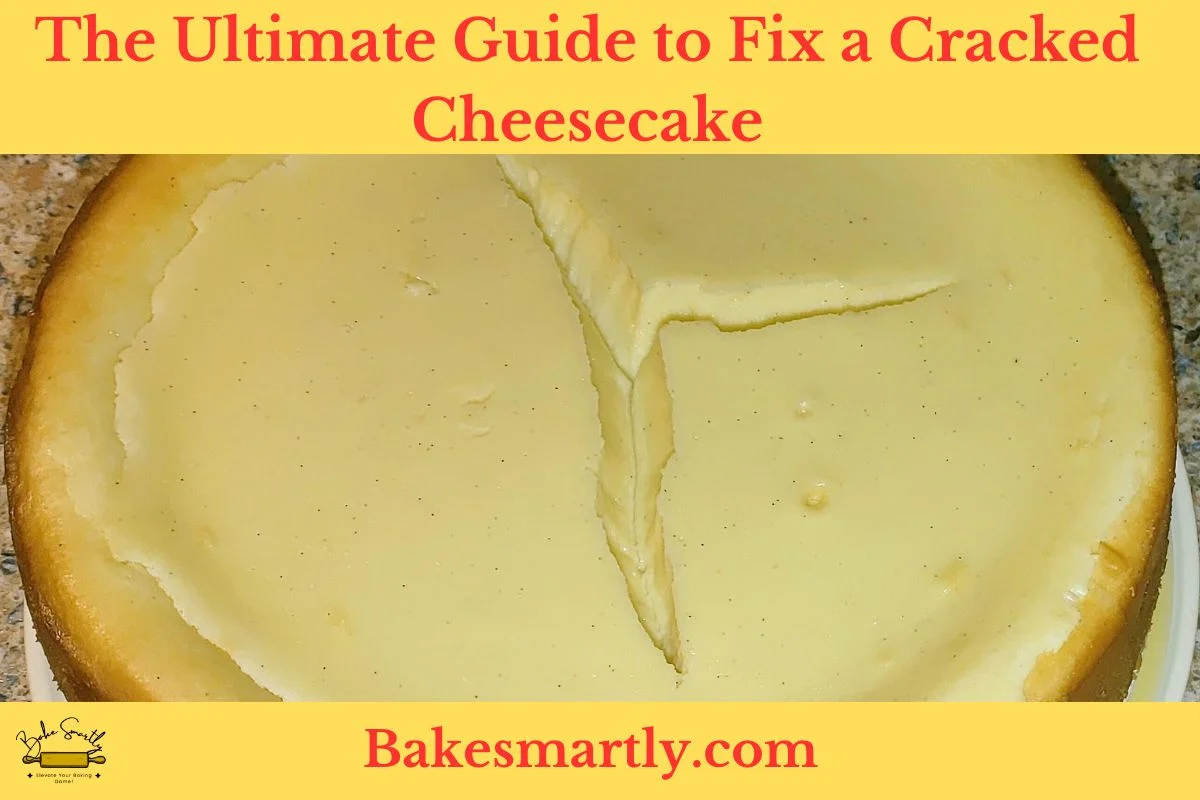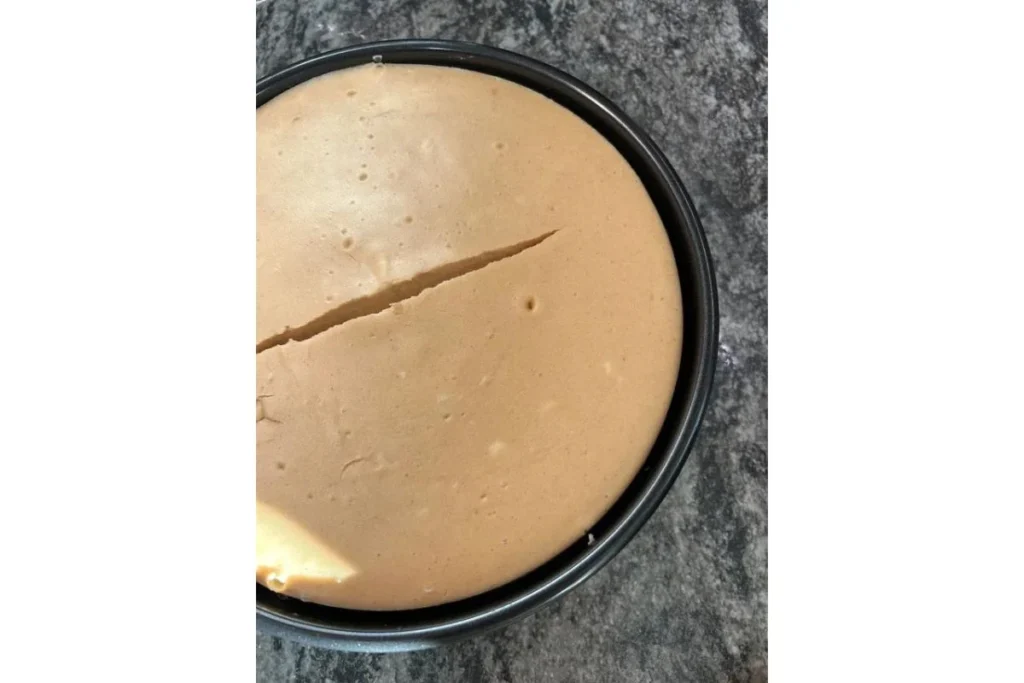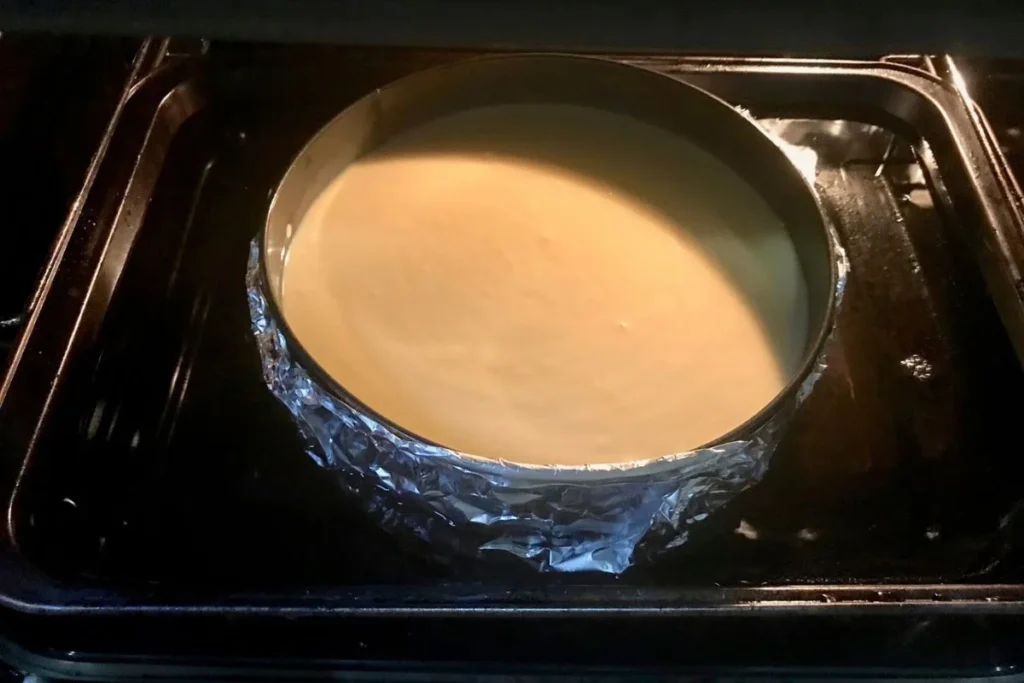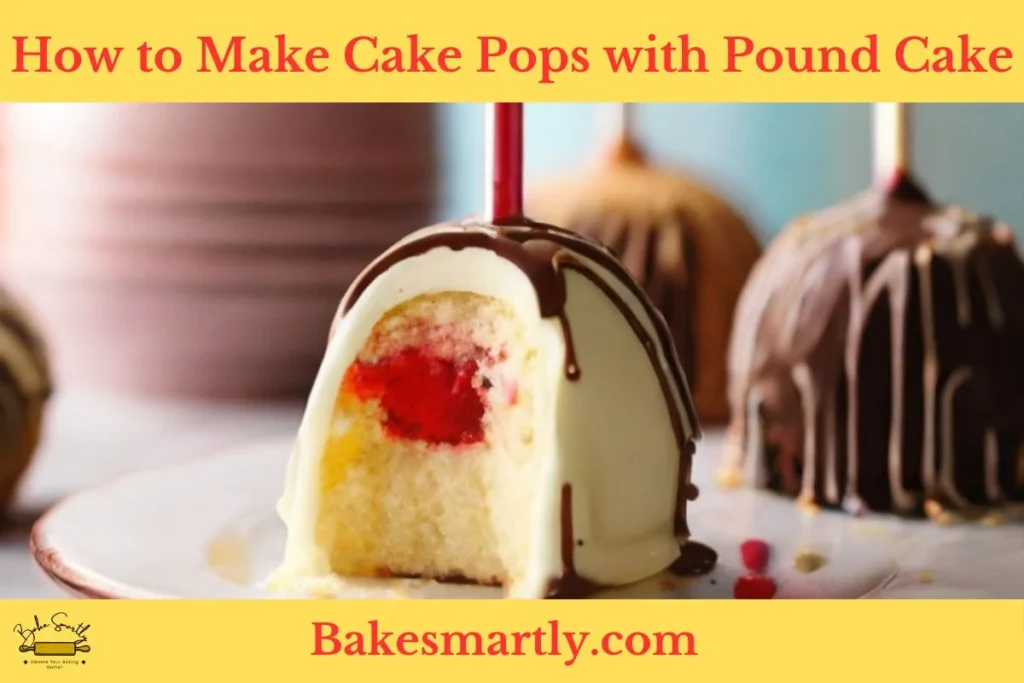
The Ultimate Guide to Fix a Cracked Cheesecake
Cheesecakes are a yummy treat loved by lots of folks for their creamy goodness and tasty crust. However, even the most seasoned bakers can encounter a common issue: a cracked cheesecake. The sight of a crack on the surface can be disheartening, but don’t worry!
In this complete guide, we will explore the reasons why cheesecakes crack and give you easy steps to fix and avoid them.
Whether you’re just starting or you’ve been baking for years, learning how to handle cracked cheesecakes will take your baking game up a notch.
Table of Contents
Toggle6 Common Causes of Cheesecake Cracks
Cracks in cheesecakes are a frequent issue in the kitchen, and knowing why they happen is important for making a flawless, crack-free dessert.
In this section, we’ll explore six common reasons behind cheesecake cracks, providing tips to help you perfect the art of making smooth and creamy treats.
1. Temperature Changes
Cheesecake cracks often happen when the temperature changes suddenly while baking. Cheesecakes like it slow and steady. If the temperature changes too fast, the edges might cook too quickly while the center stays raw, causing cracks.
To avoid this, make sure all your ingredients are at room temperature before mixing. Also, try baking your cheesecake in a water bath to keep the temperature stable.
2. Overmixing the Batter
Mixing your cheesecake batter just right is crucial. If you mix it too much, you’ll add too much air, which weakens the structure and leads to cracks. When you’re combining the cream cheese and other ingredients, mix until everything’s smooth and combined.
Don’t overdo it, or you’ll end up with a cake that’s not as sturdy.
3. Inadequate Cooling
Cooling your cheesecake properly is super important. If you rush this step or expose the cake to big temperature changes, it can crack. After baking, let your cheesecake cool down slowly.
Don’t take it straight from the hot oven to the fridge—that can shock it and cause cracks. Instead, turn the oven off and crack the door open a bit, letting the cheesecake cool down gradually. Once it’s at room temperature, you can move it to the fridge.

4. Incorrect Pan Size
The pan you bake your cheesecake in matters a lot. If it’s too small, the batter might overflow and create cracks. But if it’s too big, the batter might be too thin, and you could end up with cracks from overbaking.
Pick a pan that’s the right size for your recipe. Also, grease the sides and line the bottom with parchment paper to help the cheesecake come out easily after baking.
5. Overbaking
Knowing when your cheesecake is done baking is crucial to prevent cracks. If you bake it too long, it’ll get dry and brittle, and cracks might form as it cools. Keep a close eye on the baking time, and use the toothpick test to check for doneness.
The center should still jiggle a little when you gently shake it. Take it out of the oven when the edges are set but the center is still slightly soft for a creamy, crack-free cheesecake.
6. Incorrect Ingredient Temperatures
Using ingredients at the wrong temperatures can adversely impact the texture of your cheesecake. Ensure that your cream cheese, eggs, and other dairy components are at room temperature before incorporating them into the batter.
Cold ingredients can result in an uneven mixture, leading to cracks during baking. Allowing ingredients to come to room temperature ensures a smoother and more homogenous batter, reducing the likelihood of structural issues.
How to Fix a Cracked Cheesecake
There are several effective ways to salvage a cracked cheesecake and turn it into a dessert masterpiece. Whether dealing with small, medium-sized, or deep cracks, these simple fixes can help restore your cheesecake to its former glory.
Small Cracks:
Small cracks on the surface of your cheesecake may seem minor, but they can still be addressed with a few easy steps. The key is to act promptly before the cracks have a chance to widen during cooling.

- Hot Water Bath: If you didn’t use a water bath during baking, consider this technique for future cheesecakes. For small cracks, you can still create a steamy environment by placing a pan of hot water on the oven rack beneath the cheesecake. The moisture helps prevent the top from drying out too quickly and minimizes the chances of small cracks forming.
- Sour Cream or Ganache Topping: Covering small cracks with a thin layer of sour cream or a smooth ganache can be an effective way to conceal imperfections. Not only does this add extra flavor and moisture, but it also provides a visually appealing finish.
- Fruit Compote or Sauce: Another delightful way to mask small cracks is by adding a fruity topping. Whether it’s a berry compote, citrus glaze, or even a simple fruit sauce, the vibrant colors and flavors will distract from any minor imperfections.
Medium-Sized Cracks:
When faced with medium-sized cracks, a bit more intervention is required. However, with careful attention, you can still salvage the cheesecake without compromising its taste or texture.
- Patch and Smooth with Cream Cheese Mixture: Prepare a mixture of cream cheese, sugar, and a touch of vanilla. Gently spread this mixture over the cracked surface, effectively patching the gaps. Use an offset spatula to create a smooth finish. This method not only conceals the cracks but also enhances the creaminess of the cheesecake.
- Strategic Decoration: Turn the cracks into an opportunity for creative decoration. Dust the surface with powdered sugar, cocoa powder, or crushed nuts to add an artistic touch. You can even use edible flowers or finely grated citrus zest to distract the eye from the imperfections.
- Glaze it Up: Create a flavorful glaze using fruit preserves, heated and strained to remove any chunks. Brush the glaze over the surface of the cheesecake, allowing it to seep into the cracks. This not only adds a glossy finish but also brings a burst of fruity sweetness.
Deep Cracks:
Deep cracks require a more intensive approach, but all hope is not lost. With a combination of techniques, you can still salvage your cheesecake and present a dessert that’s as delicious as it is visually appealing.
- Layered Fix: For deep cracks, consider a multi-layered approach. Patch the cracks with a cream cheese mixture as in the medium-sized cracks section, then add a layer of ganache or a rich chocolate frosting. This combination not only covers the imperfections but also adds a delightful contrast of flavors and textures.
- Cheesecake Trifle: If the cracks are extensive, transform your cheesecake into a trifle. Crumble the cracked cheesecake into layers in a glass serving dish, alternating with whipped cream and fruit. The result is a stunning dessert that turns a potential flaw into a delightful presentation.
- Candied Nut or Cookie Crust: Create a distraction from deep cracks by adding a decorative crust on top. Crushed candied nuts or cookies pressed onto the surface can not only hide imperfections but also add a crunchy texture that complements the creamy cheesecake underneath.

How do You Keep the Cheesecake from Cracking When Cooling?
Preventing cracks in a cheesecake during the cooling process is crucial for achieving that smooth, pristine appearance.
Here are some essential tips to keep your cheesecake crack-free:
- Cool It Down Slow: Once your cheesecake finishes baking, don’t rush to yank it out of the oven. Instead, switch off the oven, crack open the door a bit, and let the cheesecake cool down slowly inside. This gradual cooling helps it shrink evenly, so you’re less likely to end up with cracks on top.
- Give It Extra Time: For an even slower cooldown, keep the cheesecake in the turned-off oven for a bit longer. It’s best to leave it there for another hour before moving it to the countertop. The extra time in the warm oven helps the cheesecake set without getting shocked by a sudden change in temperature.
- Use a Water Bath: Using a water bath while baking isn’t just good for the baking part—it also helps prevent cracks during cooling. The water bath keeps the air moist, which lowers the chances of the cheesecake drying out and cracking. Make sure to wrap the springform pan tightly in aluminum foil to keep water out. This method keeps the temperature steady, so the cheesecake cools evenly and predictably.
- Chill It Out: Once the cheesecake hits room temperature, cover it with plastic wrap and pop it in the fridge for a while, preferably overnight. Refrigerating not only improves the taste and texture but also helps it set more firmly. Cooling gradually in the fridge helps prevent cracks because the cold helps firm up the structure.
- Prep Your Pan: Prepping your pan right is key to avoiding cracks. Make sure to grease the sides of the springform pan above the crust line. Greasing helps the cheesecake shrink evenly as it cools. With a well-prepared pan and proper sealing, you can significantly reduce the risk of cracks.
Can You Still Eat Cracked Cheesecake?
A cheesecake with cracks might not look perfect, but it’s usually still totally safe to eat and super tasty.
Those cracks you see on the surface are mainly about looks – they don’t mess with how yummy or smooth the cheesecake is.
Most of the time, cracks happen when the cheesecake cools down. It might be a bummer if you were hoping for a flawless dessert to show off, but it doesn’t mean your cheesecake isn’t awesome. Lots of bakers and home cooks like the imperfections because they add a homemade touch.
If you’re worried about those cracks, you can cover them up with toppings, glazes, or fun decorations. It not only makes the cheesecake look better but also adds more flavors and textures.
The most important thing about cheesecake is how it tastes. Even if it’s got some cracks, it’s still delicious. So go ahead and enjoy your cracked cheesecake without worry. Share it with your friends and family – they’ll probably love it just as much as you do!
The Ultimate Guide to Fix a Cracked Cheesecake | Conclusion
Fixing a cracked cheesecake is an art that every baker can master with a little knowledge and practice. By understanding the causes of cracks, employing effective fixes, and implementing preventive measures, you can confidently create flawless cheesecakes that impress even the most discerning palates.
Follow the steps outlined in this ultimate guide, and soon you’ll be known for your impeccable cheesecake creations. Happy baking!
Lindsey Mackenzie
About me
Hi there! I’m Lindsey Mackenzie, the founder of Bake Smartly. Baking has been my passion since childhood, growing up in my father’s bakery. With Bake Smartly, I’m excited to share my love for all things sweet and savory. Join me on this delicious journey as we whip up scrumptious treats and sprinkle joy into every bite!






